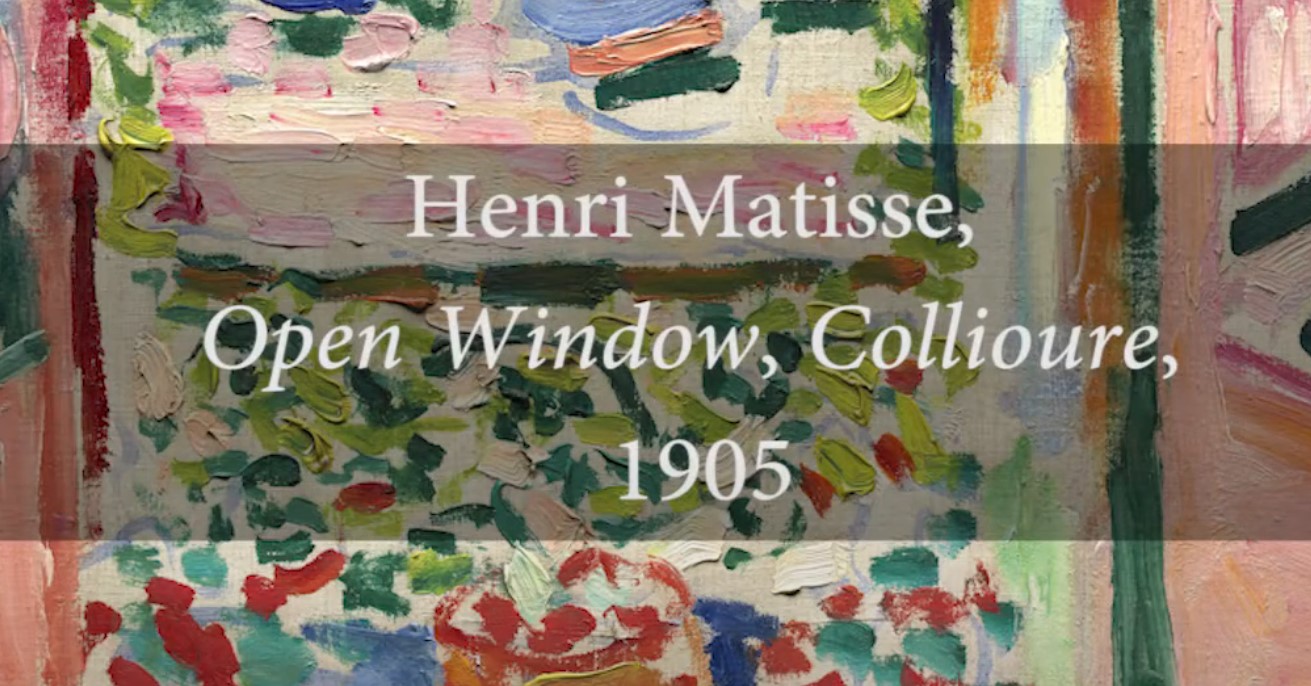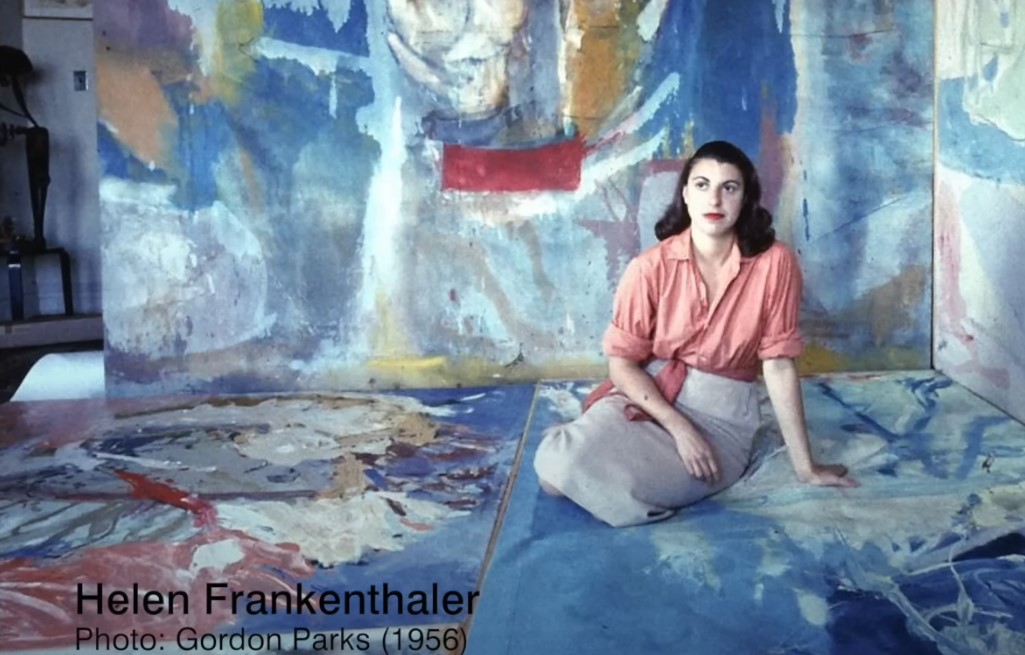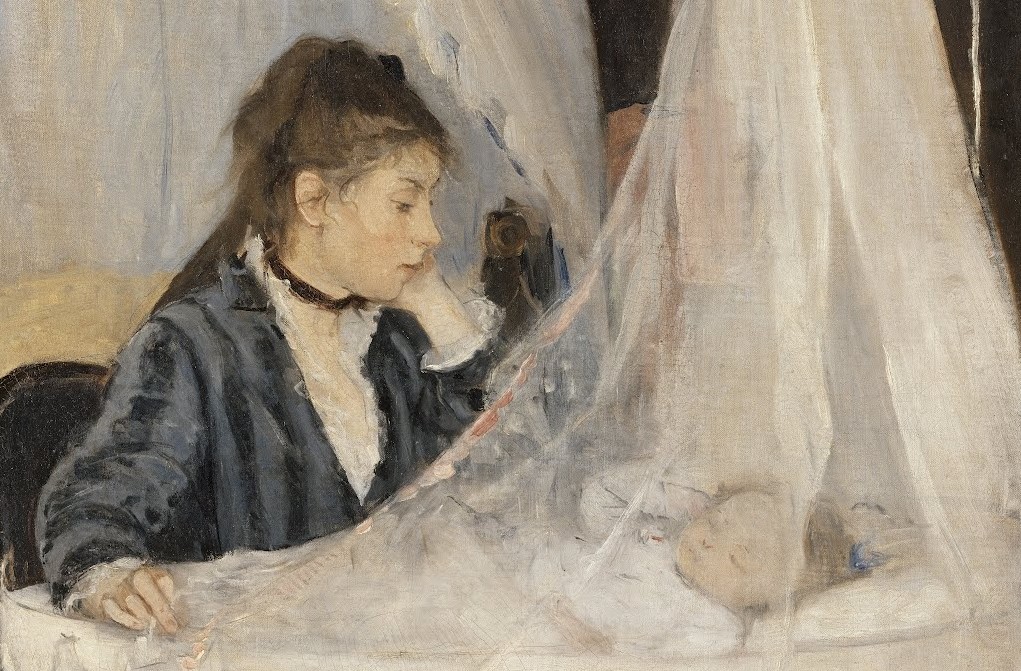Matisse’s Open Window in Collioure stands as a crucial milestone in the history of modern art. This small but explosive work, painted in 1905, marked the birth of the fauve school, challenging conventions and initiating a chromatic revolution. We will explore in depth the details of this masterpiece, analyzing its historical context, pictorial technique and the lasting impact it has left on the art world.
Table of Contents
- Historical Context for The Open Window, Collioure – Henri Matisse
- Analysis and description of The Open Window Matisse
- Duality & Three Dimensional Spaces in “Open Window, Collioure”.
Historical Context for The Open Window, Collioure – Henri Matisse
The Emergence of the Fauve School
The Open Window was born in the crucible of the Fauve school, an artistic movement that emerged in 1904 with notable artists such as André Derain, Maurice de Vlaminck and Georges Braque. The 1905 Paris exhibition marked its introduction to the public, although it received skepticism and disdain. Journalistic critics coined the term “fauve” (wild beast), and Matisse and his colleagues were labeled as such. We will analyze how this term became an accepted epithet and how Matisse embraced the autonomy of art. Photography in Paris Birth of Fauvism

Criticism of Fauvism , baptism and exhibition

At the momentous Salon d’Automne presentation, Paris 1905, Matisse and other exponents of the Fauvist movement met with a suspicious critical reception and an attitude of contempt from the public. The term “fauve” (wild beast) emerged from the critical pen of Louis Vauxcelles, who, while noting the declining formal coherence in Matisse’s work, praised the artist as one of the most talented of his time. The ambiguity in Vauxcelles’ use of “fauves” encompassed both Matisse’s fellow painters in Room VII of the Salon and the insensitive public who disparaged the artist’s creation. Although the press initially labeled Room VII as a “cage aux fauves” (cage of wild beasts), by 1906, this expression had become an accepted epithet for Matisse, Derain, and their fellow painters. Portrait drawing of Louis Vauxcelles
Analysis and description of The Open Window Matisse
It has pink waves, orange masts on boats and a multicolored sky. This little painting had a big effect. We are used to seeing it on posters and calendars, but at the time it was painted, even for those used to seeing impressionism, this went much further.
“When I put green, it’s not grass. When I put blue, it’s not the sky”.
Henri Matisse
In this painting you can see what he meant.…..

Location: National Gallery of Art, Private Collection
Period: Fovism
Material: Oil Painting
Date Created: 1905
Size: 55 cm x 46 cm
Brushstrokes: The Creative Freedom of Matisse
The application of the paint is remarkably free; practically all the brushstrokes used can be appreciated. The work gives the impression of having been created recently, and in certain areas, such as the lower right part where the unfinished canvas is shown, it reveals an unfinished aspect. It allows us to visualize Matisse’s creative process, brushstroke by brushstroke, and transports us to the place, enthusiastically participating in his response to the exuberance of color and light in a Mediterranean seaside town during the summer.
Behind Spontaneity
Although at first glance it seems that Henri Matisse painted in a quick and carefree manner, in reality, every detail was carefully thought out. The window in the painting is placed slightly to the left side, which gives a relaxed touch to the image, in line with the loose style of the brushstrokes.
The Calculated Mastery in composition
What is interesting is that, despite this relaxed appearance, there is a calculated plan behind it all. The window follows an organized structure of repeating and interlocking rectangles, creating a strong pattern on the surface of the painting and forming a series of “windows” within the image.
The artist has succeeded in creating an intriguing visual effect by highlighting the brighter area representing the central view of the ships in the harbor. This scene stands out noticeably as it is framed by darker tones present in the window frame and in a detailed pattern of green leafy vines.

Interlocking Windows, Depth and Reflections
The focus is on this central view, skillfully surrounded by multiple subsidiary window panels that add depth and complexity to the composition. In addition, the inclusion of two transom windows at the top helps to frame more views, extending the visual richness out onto the porch and surrounding vines. A particularly interesting technique is the use of glass panels in the casement windows, which not only reflect the exterior scene visible from the French window, but also capture the tones and hues of the colors present on the walls, creating a captivating visual interaction.
Symphony of Colors on his Canvas

Matisse’s mastery is manifested through the vibrant interplay of colors that bring the canvas to life. The artist employs contrasts of complementary colors in ingenious ways, highlighting his bright shades of red and pink through the strategic inclusion of cool greens. The walls, painted in fuchsia and green, contribute to this visual symphony, while the upper panes of the windows reflect the opposite color of the wall, intensifying the vibrancy of the tones through contrast.
Distances in a Visual Color Game
The creation of a pattern of bright orange and red verticals formed by the distant masts of the ships in the harbor and the closer verticals of the window frames. The shades of red and orange in the distance are not toned down to suggest depth through atmospheric perspective. Similarly, the dark blue and green brushstrokes representing the hulls of the ships are reflected in the dark blue and green paint strokes used to indicate the edges of the window frames and various objects in the foreground. Matisse defies perceptual conventions, merging distant and nearby elements into a vibrant visual surface.
Master Chromaticism
A similar play of contrasts is seen in the interplay between a vertical strip of bright orange, possibly representing a curtain, and the dark ultramarine strip of the window frame. Matisse creates an evocative depiction of sea and sky through varied patterns of brushstrokes in shades of pale pink and turquoise, offering a window into a landscape full of vitality and chromatic expression.

Duality & Three Dimensional Spaces in “Open Window, Collioure”.
Matisse’s window painting plays with the duality of its function, highlighting its role as a framing device in a three-dimensional space. Despite the opening of the windows inward, generating a perspective that guides towards the opening, the balcony with pots on the floor acts as a shallow in-between space, mediating between the room and the view of the harbor stretching to the horizon. Although spatial depth is suggested, this illusion is challenged by the application of color and paint that underscores the flat surface of the canvas, defying the creation of a convincing illusionistic scene.
The work constantly reminds us that we are looking at a painting, not a real window, revealing Matisse’s unique ability to play with perception and artistic representation.
Defying Reality
The conspicuously visible brushstrokes and unpainted areas on the canvas are key tools by which Matisse challenges the illusion of reality. However, his approach to color also plays a crucial role. Not only is it intensely bright and flat, lacking the subtleties of chiaroscuro traditionally employed to hint at volume and depth, but it also repeatedly undermines the clear distinction between foreground and background.
In conclusion, the key elements that make The Open Window a unique masterpiece, from its role in the fauve school to the meticulousness behind the apparent spontaneity, Matisse’s work remains relevant today. We close by reflecting on how The Open Window transcends painting to become a window into Matisse’s innovative mind and his lasting impact on modern art.
Other works by the Artist:
[the-post-grid id=”3062″ title=”The Open Window Matisse”]




